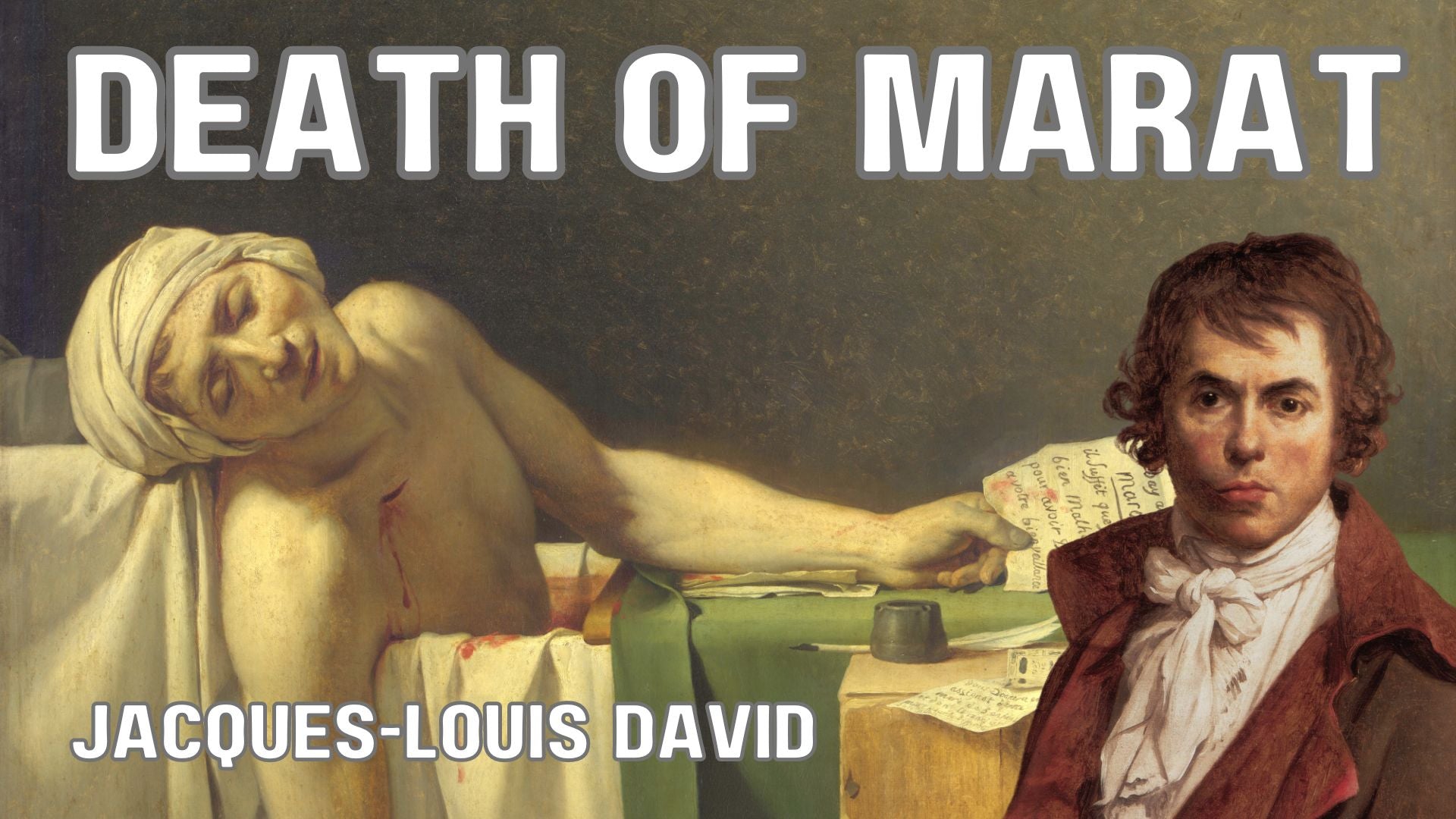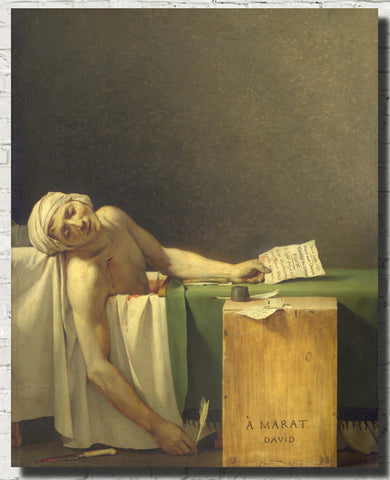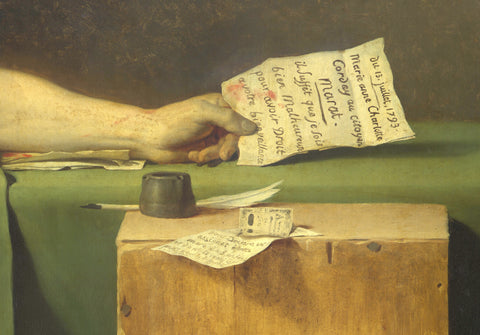Table of Contents:[hide]
Jacques-Louis David, a prominent Neoclassical painter of the 18th century, left an indelible mark on art history with his iconic work, "The Death of Marat." This masterpiece, created in 1793, is a powerful depiction of the murder of the French revolutionary leader Jean-Paul Marat (i). Let's delve into the intricacies of this painting and explore the historical, artistic, and cultural context that surrounds it.
1. Historical Context
In the throes of the French Revolution (ii), Marat emerged as a fervent revolutionary, a journalist, and a member of the radical Jacobin faction. "The Death of Marat" captures the moment when Marat, suffering from a skin condition, was assassinated by Charlotte Corday (iii) in his bathtub. David's choice of subject matter reflects the tumultuous political climate of thetime and his allegiance to the revolutionary cause.
2. Composition and Symbolism
2.1 The Poignant Scene
The painting portrays Marat slumped over in his bathtub, a quill still in his hand, and his lifeblood draining away. The stark simplicity of the composition intensifies the emotional impact of the scene. Marat's lifeless body dominates the canvas, drawing the viewer's attention to the tragedy unfolding.
2.2 Symbolic Elements
David strategically incorporates symbolic elements that amplify the narrative. The inkwell and paper on the ledge beside the tub symbolize Marat's commitment to journalism and the dissemination of revolutionary ideas. The composition's symmetry reinforces the solemnity of the event, while Marat's gaze remains fixed, as if beckoning the viewer to join the cause.
3. Neoclassical Aesthetics
3.1 Precision and Clarity
As a leading Neoclassical painter, David adheres to the movement's principles in "The Death of Marat." The precision in anatomical detail and the clarity of forms reflect the Neoclassical emphasis on rationality and order. This calculated approach enhances the painting's emotional impact by juxtaposing the gruesome scene with a meticulous artistic technique.
3.2 Classical Influences
David's admiration for classical art is evident in the composition's echoes of ancient sculpture. The poised, lifeless body of Marat is reminiscent of classical statues, adding a timeless quality to the portrayal of a contemporary event. This fusion of classical aesthetics with a contemporary subject matter is a hallmark of Neoclassicism.
4. Emotional Resonance
4.1 Pathos and Tragedy
"The Death of Marat" resonates with pathos and tragedy. David masterfully captures the intensity of the moment, inviting viewers to empathize with Marat's untimely demise. The dramatic lighting enhances the emotional impact, casting Marat's lifeless form in a poignant chiaroscuro that heightens the gravity of the scene.
4.2 Political Allegiance
David's alignment with revolutionary ideals is palpable in the emotional resonance of the painting. By immortalizing Marat's sacrifice, the artist transforms a political event into a timeless testament to the human cost of revolution. The emotive power of "The Death of Marat" extends beyond its historical context, engaging viewers on a visceral level.
5. Impact and Legacy
"The Death of Marat" stands as a testament to David's artistic prowess and political conviction. Beyond its immediate impact, the painting has become an enduring symbol of revolutionary sacrifice. Its influence extends to subsequent generations of artists who have drawn inspiration from David's fusion of political passion and artistic excellence.
FAQs
-
Why did Jacques-Louis David choose to paint the death of Jean-Paul Marat?
- Answer: David was a fervent supporter of the French Revolution and saw Marat as a martyr for the revolutionary cause. Painting Marat's death served both as a tribute to a fallen comrade and as a propaganda tool.
-
What is the significance of the quill and paper in the painting?
- Answer: The quill and paper symbolize Marat's commitment to journalism and the spread of revolutionary ideas. They highlight the intellectual aspect of the revolutionary struggle and Marat's role in shaping public opinion.
-
How did Neoclassical aesthetics influence the painting?
- Answer: Neoclassicism emphasized rationality, order, and a return to classical forms. David incorporated these principles in the precision of anatomical details, clarity of composition, and classical influences in the portrayal of a contemporary event.
-
What emotions does "The Death of Marat" evoke in viewers?
- Answer: The painting elicits a range of emotions, including empathy, sorrow, and a sense of tragic loss. The dramatic lighting and meticulous technique intensify the emotional impact, engaging viewers on both intellectual and emotional levels.
Conclusion
"The Death of Marat" remains a pinnacle of Neoclassical art, transcending its historical roots to convey a timeless message of sacrifice and political commitment. Jacques-Louis David's masterful synthesis of artistic skill and revolutionary fervor continues to captivate audiences, ensuring the enduring legacy of this iconic masterpiece.
Prints and Canvas Panels
References:
(i) Britannica
(ii) Revolution Francais
(iii)Charlotte Corday



